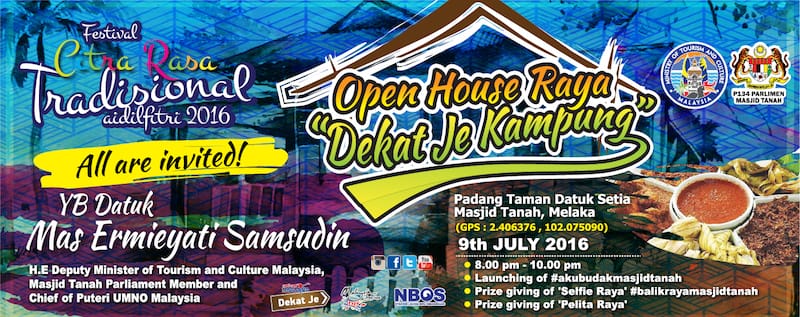HEALTH TOURISM IN MALAYSIA
Malaysia is fast becoming a strong competitor in the global health and medical tourism sector. Given the potential of health tourism as a foreign exchange earner, the government has taken a series of proactive measures to enhance Malaysia as a preferred health tourism destination.
Health tourism in Malaysia consists of two main categories which are medical tourism and wellness programme. Patients can opt for medical treatments in one of our internationally recognised hospitals, and stay on during the convalescence or recovery period. Or they can come for a holiday by exploring the various forms of wellness programmes that are available in Malaysia.
Competitive medical fees and modern medical facilities are two vital factors that make Malaysia a popular destination among health tourists. Patients can undergo treatment and recuperate in any part of the country for much less than what it would cost them for a treatment in other countries. For example, a normal cardiac bypass surgery (CABG) in Malaysia would cost only between US$6,000 and US$7,000.
Malaysia offers a wide choice of state-of-the-art private medical centres boasting an impressive array of sophisticated diagnosis, therapeutic and in-patient facilities. These establishments are well-equipped and staffed to ensure the highest level of professionalism, safety and care to patients. Most private medical centres have certifications for internationally recognized quality standards such as MS ISO 9002 or have been given accreditation by the Malaysian Society for Quality of Health.
Most private medical centres in Malaysia also offer comfortable accommodation ranging from private rooms to suites for single occupancy or more. Room charges, inclusive of meals, vary at medical centres but are attractively priced. Some medical centres even provide highly qualified and trained private nurses and personal butlers at a reasonable cost.
In brief, factors that contribute to making Malaysia a centre of medical excellence in the region are listed below:
a) Safe and politically stable country
b) Wide choice of world class infrastructure facilities e.g. National Heart Institute and Tun Hussein Onn National Eye Hospital
c) Competitive and affordable pricing and favourable exchange rate
d) Highly qualified, experienced and skilled consultants with internationally recognised qualifications
e) Tolerant multi-cultural and multi-racial Malaysian society accommodates patients of different cultures and religions
f) Communication is easy - English speaking medical staffs
g) State-of-the-art technology, such as MRI, 64-Slice CT Scan, PET Scanner for early detection of cancer and other diseases, cyberknife which is able to radiate tumours without damaging adjacent vital structures
h) Quality and safety system in place, such as ISO and accreditation by the Malaysian Society for Quality in Health (MSQH)
i) Recently, the Ministry of Health, Malaysia has set up a Corporate Policy and Health Industry Division to promote medical tourism and related healthcare products including traditional medicine, etc. As such, the Ministry's promotional efforts are more focused with the support from relevant government agencies and private sector
j) Attractive and affordable packages during recuperation period.
To ease entry formalities for patients, the Immigration Department of Malaysia has implements the Green Lane System at main entry points which expedites custom clearance for medical travellers. Accompanying family members or friends of the patient can take advantage of their visit to sample Malaysia's various interesting tourist attractions. Cities like Kuala Lumpur and
Penang offer a truly comprehensive range of both health and tourism services, all within easy reach. Penang, for example, is not just home to many hospitals and medical centres; it boasts the rejuvenating air of Penang Hill, the cozy warmth of shady beaches, and endless cultural discoveries.
Statistics indicate a strong and growing interest in Malaysia's healthcare tourism industry. According to the Association of Private Hospitals Malaysia, the number of foreigners seeking healthcare services in Malaysia has grown from 75,210 patients in year 2001 to 296,687 patients in year 2006 which generated a total of RM203.66 million (USD 59 million) in revenue. From January to March 2007, Malaysia received 77,009 medical tourists.
BRIEF BACKGROUND
Under Malaysia's current health tourism promotion drive, 35 private hospitals in the country have been identified to promote Malaysia as a health tourist destination.
Malaysia's success in establishing itself as a regional hub for excellent healthcare, capable of providing state-of-the-art medical facilities and services for health tourists, began following the setting up of the National Committee for the Promotion of Health Tourism in January 1998.
Besides the Health Ministry, the Committee includes the Ministry of Tourism, the Association of Private Hospitals of Malaysia and other government agencies such as the Malaysian Association of Tours and Travel Agencies, Malaysian Airlines and several private hospitals.
The Committee has been cooperating with other agencies in carrying out promotional activities concerning health tourism in the country. This includes collaborations with the Malaysian External Trade Development Corporation (MATRADE) through its trade missions; Tourism Malaysia through its promotional activities; various state governments; private hospital groups and the Association of Private Hospitals Malaysia.
For further information, please log on to Association of Private Hospitals of Malaysia (APHM) website at www.hospitals-malaysia.org or the health tourism portal atwww.malaysiahealthcare.com .
Suite A450, 4th Floor, Pantai Medical Centre,
8 Jalan Bukit Pantai, 59100 Kuala Lumpur,
Malaysia
Telephone : +6 (03) 22840278
Fax : +6 (03) 22841278
E-mail : inquiry@hospitals-malaysia.org

 View Previous
View Previous

